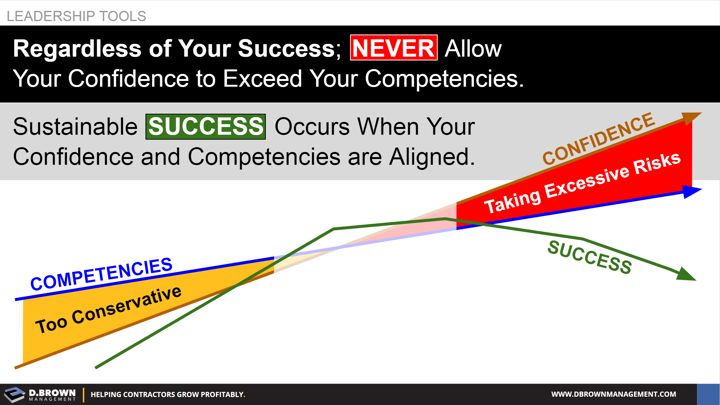Sustainable success comes when this confidence is kept in alignment with the competencies required to effectively serve the customer.
COMPETENCIES
- Know clearly what competencies are required to effectively serve the customer at an individual level and aggregated team level.
- Rigorously look at your workflows and where you can reorganize them to close some of the competency gaps at the team level through work reassignment.
- Relentlessly work on closing those competency gaps individually and as a team.
CONFIDENCE & SUCCESS
- Many times your competencies are actually much higher than your confidence and that will impede success because you are afraid to take risks that you are more than competent enough to take.
- Success breeds confidence and that leads to more success - up to a point. All decisions carry risks and as long as you are 15% confident in an outcome that has a 15% chance of success all reasonable people will act appropriately. If however you are 30% confident in that decision you. This is when failure starts to creep in.
"There's nothing like biting off more than you can chew, and then chewing it anyway. "
Remember Icarus and flying too close to the sun…

